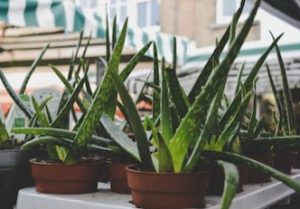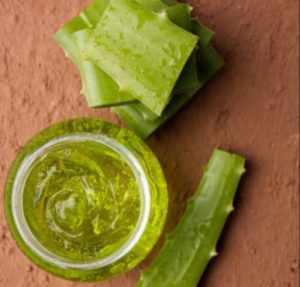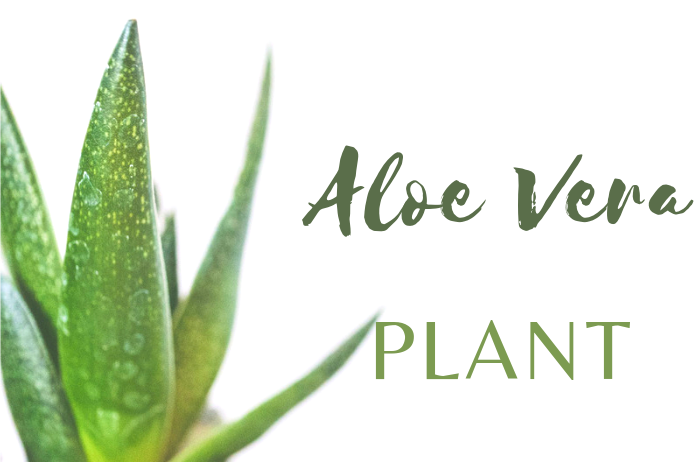Everything you need to know about Aloe Vera, it’s origin, nutritional value, medicinal Properties and uses, as well as pest and diseases its prone to are well articulated in this article.
Aloe Vera is identified by its Preferred Botanical Name as: Aloe Barbadensis Miller
Preferred Common Name: Aloe Vera
Origin Of Aloe Vera
Aloe is a succulent plant that has it’s origins in the Arabian peninsula. It belongs to the Liliaceae family, and it is an evergreen perennial plant, growing to the height of 1½ – 2½ ft.
It is a multi-purpose plant owing to the numerous benefits it offers.
Aloe leaves are usually thorny on both sides with a prickly tip.
It is not a regular looking leaf, it is thick, protracted, and juicy with a jelly-like content that tastes bitter. The leaves are usually 25-30cm long and 3-5cm wide.
The plant usually requires low care and maintenance; hence it is a common household plant in Nigeria and many other countries.
Most people use it for decorative purposes, since it’s an indoor plant. It best grows inside a flower pot or vase and is also known as a potted plant that flourishes more in a dry climate.
The aloe plant is most often seen as a medicinal plant, and it is useful in the following ways
- Cosmetics productions
- Can cure acne
- Promotes hair growth, serves as a moisturizer, detangler, and leave-in conditioner to hair.
- Can be used as a face primer before applying your makeup and hair edges.
Manufacturing companies of consumer goods such as beverages, cosmetics, and skincare products have utilized the many benefits of aloe vera by adding it to their products.
Aloe vera prevents diabetes, cures nausea, reduces glucose level, reduces oxidative stress, cures gum diseases, relieves joint and muscle pain, reduces cholesterol, and many more.
Nutrient Composition Of Aloe Vera
A serving of 100g aloe vera contains the following nutrients:
Calories 2
Carbohydrates 1g
Calcium 10mg
Medicinal Properties and Uses Of Aloe Vera
Aloe vera has numerous medicinal uses, and it is essential in managing various problems. Below are a list of its benefits:
Due to the many health compounds present in aloe vera, tumor formation and cancerous growth are prevented.
Used for skin infections, and the vitamin E nutrient present in the plant helps in reducing wrinkles, sunburns, pimples, and blisters.
This plant has anti-inflammatory properties, great in reducing joint and muscular pain.
It also possesses powerful Antioxidant properties which help in fighting disease and heal burns faster.
It prevents gastrointestinal issues.
It helps to strengthen the immune system as well efficient in reducing dental decay.
It also helps in hydration
How To Grow Aloe Vera

To grow this plant, below is what you need to know:
Yield Information
When Aloe is planted in a suitable condition, it can give an excellent yield. Since the leaf is the most utilized part of the plant
One plant can produce more than ten leaves and will keep on producing as long as the soil condition is suitable for their growth.
You can harvest your aloe leaves, cut into sizes, and then extract the gel.
Nursery and Transplant Requirements
Propagation of this plant is by vegetative methods, and they are shallow-rooted plants.
Plant in a location where the plant can receive 8-10 hours of light a day.
Soil And Sun Requirements
Plant your aloe vera in a pot with drainage to prevent the rot of leaves. Aloe plants are succulents and do not require tight or deep planting.
A soil mix with coarse sand, lava rock, or perlite will make good soil for your aloe plant. Aloe plants can also grow in a cactus mix.
Aloe plants thrive well in hot or dry temperatures; however, they can also survive during cold temperatures but in a dormant state.
Temperature below 25 degrees Fahrenheit will be harmful to your aloe plant.
Watering Requirements Of Aloe Vera
Aloe plants do not need frequent watering, to avoid rot because of too much water.
However, allow the soil to absorb water at least 1-2 inches deep between watering. Don’t let the plant sit in water.
During winter, watering should be in small amounts, water your aloe plant at least every three weeks.
You can remove discolored leaves with a disinfected knife without harming the remaining leaves.
Planting And Spacing Requirements Of Aloe Vera
Generally, the distance between aloe vera plant rows is 60 – 80cm and 30 – 80cm. Aloe planting requires an extensive type of cultivation.
A hectare of land for about 10,000 aloe plants will be two rows and need a 1.50m vast space. Do not fill the sand to the pot’s rim.
Leave at least a 34 inch of space between the topsoil and the pot rim. The tip of the leaves should be on the topsoil.
Ensure that none of the leaves are buried in the soil, and the roots are covered.
Harvesting Of Aloe Vera

It is relatively simple to harvest this plant for its gel and juice. Aloe plants with a longer life span have a higher concentration of active ingredients – so harvesting mature plants gives the best result.
To harvest your aloe plant for gel and juice:
Remove 3-4 leaves at a time, choosing thick leaves from the outer sections of the plant.
Ensure the leaves are healthy and free of any mold or damage.
Cut them close to the stem – the base of the leaf harbors most essential nutrients.
Avoid the roots.
Wash and dry the leaves.
Trim the thorny edges with a knife.
Leave the aloe vera leaf in water for a few minutes to deactivate the activeness of the latex (a yellowish liquid that drops from the base of the leaf).
The aloe leaf irritates the skin and causes itches if used directly without soaking in water.
Cut the aloe leaf into your desired size, and then use a knife to remove one side of the leaf. Use a spoon or knife to scrape out the gel from the leaf. The interior gel is the most used part of the leaf.
Storage Of Aloe Vera
Keep plant leaves cool, away from heat and excess sunlight.
Use an airtight container.
Use non-transparent containers to prevent light damage.
You can freeze the aloe leaf to last longer.
Disease And Pest of Aloe Vera Plant
Like all plants, aloe Aloe vera are affected by some common pests and diseases such as;
1. Aloe Rust
This is a fungi disease, and symptoms include small pale yellow spots on leaves that expand and turn brown and leaves dropping from the plant.
The condition is self-limiting and requires no treatment.
2. Bacterial Soft Rot
This is a bacterial disease, and its symptoms include watery and rotting leaves, which are darker in color. Young leaves wilting and collapsing. You can manage by avoiding over-watering.
3. Aloe Vera Aphids
Aphids are insects that attack aloe vera. It causes slow growth and stunting. You can control it by using natural enemies of insects.
Conclusion
Aloe vera is a highly valuable plant with so much usefulness. It is easy to maintain and can serve as decorative flowers.
It’s medicinal purposes makes it highly addictive to grow around the home as you never know when it can come in handy.
